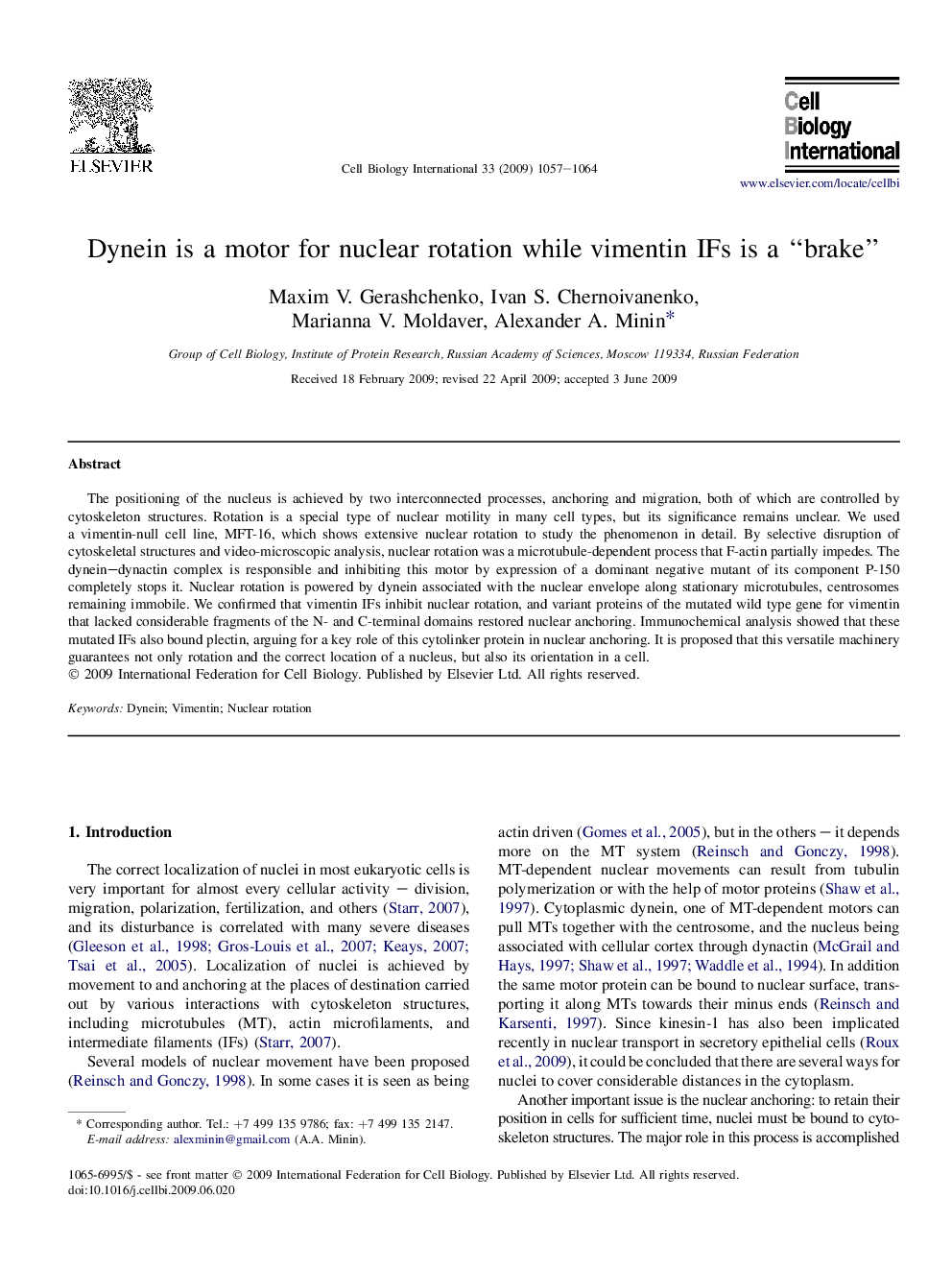| Article ID | Journal | Published Year | Pages | File Type |
|---|---|---|---|---|
| 2067056 | Cell Biology International | 2009 | 8 Pages |
Abstract
The positioning of the nucleus is achieved by two interconnected processes, anchoring and migration, both of which are controlled by cytoskeleton structures. Rotation is a special type of nuclear motility in many cell types, but its significance remains unclear. We used a vimentin-null cell line, MFT-16, which shows extensive nuclear rotation to study the phenomenon in detail. By selective disruption of cytoskeletal structures and video-microscopic analysis, nuclear rotation was a microtubule-dependent process that F-actin partially impedes. The dynein-dynactin complex is responsible and inhibiting this motor by expression of a dominant negative mutant of its component P-150 completely stops it. Nuclear rotation is powered by dynein associated with the nuclear envelope along stationary microtubules, centrosomes remaining immobile. We confirmed that vimentin IFs inhibit nuclear rotation, and variant proteins of the mutated wild type gene for vimentin that lacked considerable fragments of the N- and C-terminal domains restored nuclear anchoring. Immunochemical analysis showed that these mutated IFs also bound plectin, arguing for a key role of this cytolinker protein in nuclear anchoring. It is proposed that this versatile machinery guarantees not only rotation and the correct location of a nucleus, but also its orientation in a cell.
Keywords
Related Topics
Life Sciences
Biochemistry, Genetics and Molecular Biology
Biophysics
Authors
Maxim V. Gerashchenko, Ivan S. Chernoivanenko, Marianna V. Moldaver, Alexander A. Minin,
